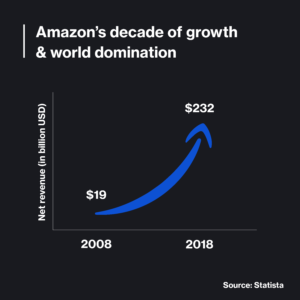This week in 60 seconds…
- Microsoft have created a coding tool for children with visual impairments – emphasising the demand for inclusive and accessible tech education…
- In fact, it pays to be more inclusive – with an Indigenous woman nominated for Best Actress, this week’s academy awards is sure to demonstrate the growing impact women and people of colour have on the American box office
- Meanwhile, Instagram are putting a heavy focus on fundraising – introducing a brand new IG stories feature that allows click-through to a donate page
- Instagram’s not the only brand trying new things; Adidas are introducing their first hiking boot, the ‘Free Hiker,’ with hopes of shaking up the stale and ‘under-appreciated’ outdoors sector
- Lynx are also challenging the norm with their latest campaign, encouraging hairy-chested men to embrace the comfort of being cleanly shaven… And we can hear every stroke
- From challenges to collaborations, Microsoft are rebuilding Edge to run on Google’s Chromium redesign engine – but now we’re worried we’ll lose the open web to a single, dictating monopoly…
- Although, perhaps we don’t care about what we see – according to our favourite virtual celebrity influencers, we’re totally fine with things being artificial
A final thought…
There is no doubt that diversity and inclusiveness is a good thing. In fact, our dreams of a utopian culture are built upon acceptance of all genders, physical appearance, religious beliefs, ages and sexual orientation.
However diversifying brands and the products they produce can have a very adverse effect.
Whilst we rally for bigger brands to better represent smaller marginalised groups or under-appreciated marketplaces – we’re encouraging growth, and with growth comes power and a monopolisation of the industry. Smaller authentic brands, who really believed in (and owned their positions) are disregarded as we make way for those we hated all along.
Data Byte
Brands like Amazon are diversifying their product range to appeal to more customers with different interests. As a result, their sales growth has increased since 2008. The question remains – where are the other businesses now?

